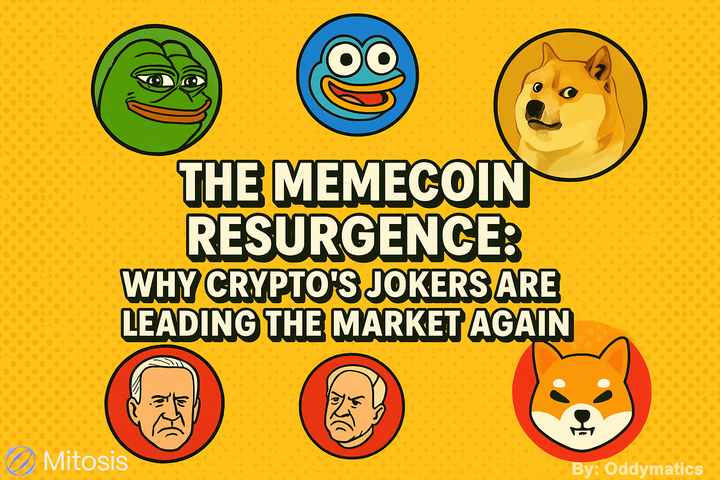The Environmental Impact of Web3: Sustainability in Blockchain

Web3, the decentralized vision of the internet powered by blockchain technology, promises greater privacy, user control, and trustless systems. However, concerns about its environmental impact—particularly from energy-intensive Proof-of-Work (PoW) blockchains—are growing. As the world continues to tackle climate change, the sustainability of Web3 technologies is under increasing scrutiny.
This article explores the environmental challenges Web3 faces, focusing on the energy consumption of PoW, and examines sustainable solutions such as Proof-of-Stake (PoS), Layer 2 technologies, and eco-friendly blockchain initiatives.
Environmental Concerns of Web3 Technologies
The Energy Demands of Proof-of-Work (PoW)
Proof-of-Work (PoW) is the consensus mechanism used by major blockchains, like Bitcoin, which requires miners to solve complex cryptographic puzzles to validate transactions and secure the network. This process consumes enormous amounts of computational power, resulting in significant energy usage.
Bitcoin’s Carbon Footprint:
Bitcoin’s annual energy consumption is estimated to be between 100-150 TWh (terawatt-hours)—comparable to the total energy consumption of entire countries, such as Argentina or Norway. According to studies by the Cambridge Centre for Alternative Finance, Bitcoin’s carbon emissions could exceed 100 million metric tons of CO2 annually, depending on the energy mix in mining regions (such as coal-heavy grids in China versus renewable-heavy grids in Scandinavia).
Ethereum’s PoW Legacy:
Before Ethereum's transition to PoS in 2022, the network consumed approximately 70-80 TWh annually. Its global mining operations were often powered by fossil fuel-based grids, contributing to high emissions.
Broader Web3 Implications:
Beyond cryptocurrencies, Web3 includes decentralized applications (dApps), non-fungible tokens (NFTs), and decentralized finance (DeFi) platforms, many of which rely on PoW blockchains. As the use of these technologies increases, so does their collective energy demand—raising concerns about scalability in a world constrained by carbon emissions.
Other Environmental Concerns
- E-Waste:
PoW mining hardware, like ASICs (Application-Specific Integrated Circuits), becomes obsolete quickly, contributing to massive e-waste. Bitcoin mining alone generates thousands of tons of e-waste annually. - Resource Intensity:
Mining operations also require significant amounts of water for cooling and land for data centers, which can strain local ecosystems, especially in mining hubs like Inner Mongolia and Texas. - NFTs and dApps:
Although NFTs and dApps aren’t inherently energy-intensive, their transactions on PoW blockchains carry the environmental costs of transaction validation. For example, minting an NFT on Ethereum prior to its PoS upgrade emitted as much CO2 as driving a gas-powered car for 500 miles.
Solutions for a Sustainable Web3
Several promising solutions have emerged within the blockchain community to address these environmental concerns, ranging from new consensus mechanisms to scalability improvements and eco-friendly projects.
1. Proof-of-Stake (PoS): A Greener Consensus
PoS eliminates energy-intensive mining by allowing validators to secure the network by staking cryptocurrency. Validators are selected based on the amount of cryptocurrency they stake and other factors, significantly reducing energy usage.
- Ethereum’s Merge:
In September 2022, Ethereum transitioned to PoS, reducing its energy consumption by over 99.95%, from around 80 TWh annually to less than 0.05 TWh. This shift demonstrated PoS’s potential to make large-scale blockchains much more sustainable. - Other PoS Blockchains:
Blockchains such as Cardano, Algorand, and Tezos were designed with PoS from the beginning, resulting in energy footprints thousands of times smaller than Bitcoin’s. For instance, Algorand claims that its network emits less CO2 per transaction than a single Google search. - Trade-Offs:
While PoS is environmentally friendly, some critics argue that it may lead to centralization, with wealthier stakeholders dominating the validation process. However, innovations like sharding and delegated PoS aim to mitigate these concerns.
2. Layer 2 Technologies: Scaling Sustainably
Layer 2 (L2) solutions, built atop base blockchains (Layer 1), enhance scalability and lower energy consumption per transaction. These solutions process transactions off-chain while leveraging the security of the base layer, effectively reducing environmental impact.
- Rollups:
Optimistic and Zero-Knowledge (ZK) rollups bundle thousands of transactions into a single proof, dramatically reducing energy costs. Rollups like Arbitrum and Optimism on Ethereum have reduced transaction energy use by up to 90%, making decentralized applications (dApps) and NFTs more sustainable. - Sidechains:
Polygon, a popular L2 sidechain, processes transactions at a fraction of Ethereum’s energy cost while maintaining compatibility with Ethereum’s ecosystem. Polygon’s PoS-based architecture further improves efficiency. - State Channels:
Technologies like Bitcoin’s Lightning Network enable off-chain microtransactions, reducing energy usage for frequent, low-value transactions.
3. Eco-Friendly Blockchain Projects
Several blockchain projects are making sustainability a priority by integrating green principles into their design and operations.
- Carbon-Neutral Blockchains:
Algorand and Tezos have committed to carbon-neutral or even carbon-negative operations. Algorand uses PoS and collaborates with ClimateTrade to fund renewable energy projects. - Energy-Efficient Protocols:
Solana, though not strictly PoS, uses a Proof-of-History mechanism to efficiently timestamp transactions, consuming far less energy than PoW chains. Solana’s energy consumption per transaction is equivalent to that of a few Google searches. - Green NFTs:
Platforms like Flow and Tezos support NFT marketplaces with lower energy footprints. Projects like Aerial and KlimaDAO use blockchain to tokenize carbon credits, creating decentralized markets that incentivize sustainable practices. - Renewable Energy Integration:
Some mining operations—particularly in regions like Iceland and Quebec—leverage renewable energy sources like geothermal and hydroelectric power. Initiatives like the Crypto Climate Accord aim to transition all blockchains to renewable energy by 2030.
4. Other Innovations
- Sharding:
Ethereum’s ongoing upgrades, including sharding, involve splitting the blockchain into smaller, parallel-processing segments. This reduces energy demands by distributing workloads while maintaining decentralization. - Hybrid Models:
Some blockchains, like Polkadot, use a hybrid approach, combining PoW and PoS to balance security and efficiency. This minimizes energy use without compromising the integrity of the consensus process. - Decentralized Governance for Sustainability:
Decentralized Autonomous Organizations (DAOs) are being used to fund green initiatives. KlimaDAO, for instance, governs a carbon credit marketplace, aligning financial incentives with environmental goals.
Challenges and Future Directions
Despite these innovations, there are still hurdles to achieving sustainability in Web3:
- Bitcoin’s Inertia:
Bitcoin’s entrenched PoW model and decentralized governance make transitioning to PoS or other mechanisms unlikely in the short term. Convincing miners to adopt renewable energy or Layer 2 solutions remains a challenge. - Energy Mix Variability:
The environmental impact of blockchains varies depending on local energy grids. PoS chains, though more energy-efficient, may still indirectly contribute to emissions in regions dependent on coal or other fossil fuels. - Scalability vs. Decentralization:
Solutions like Layer 2s or centralized sidechains may compromise Web3’s foundational principle of decentralization, requiring careful design to maintain trustlessness while improving scalability. - Regulatory Pressures:
Governments are increasingly scrutinizing the environmental impact of crypto. Regulations, such as the EU’s MiCA framework and U.S. proposals for crypto energy reporting, could encourage greener practices but may also stifle innovation if too restrictive.
Looking forward, the Web3 ecosystem must prioritize:
- Universal Renewable Energy Adoption:
Scaling renewable-powered mining and validator nodes through incentives and partnerships. - Standardized Metrics:
Creating transparent frameworks to measure and compare blockchain energy consumption and emissions. - Education and Advocacy:
Raising awareness among developers, users, and policymakers about sustainable Web3 practices to drive the adoption of green technologies.
Conclusion
The environmental impact of Web3, driven largely by the energy demands of PoW, presents a significant challenge to its long-term sustainability. However, solutions like PoS, Layer 2 technologies, and eco-friendly blockchain projects offer promising pathways toward a greener future. Ethereum’s Merge, rollups like Arbitrum, and carbon-neutral chains like Algorand show that Web3 can align with global climate goals. By embracing renewable energy, adopting innovative protocols, and fostering decentralized governance, the Web3 ecosystem can reduce its ecological footprint while delivering on its promise of a decentralized, user-centric internet. The journey to a sustainable Web3 is underway, but it will require collective action from developers, users, and policymakers to create a greener, more sustainable future.
References















Comments ()